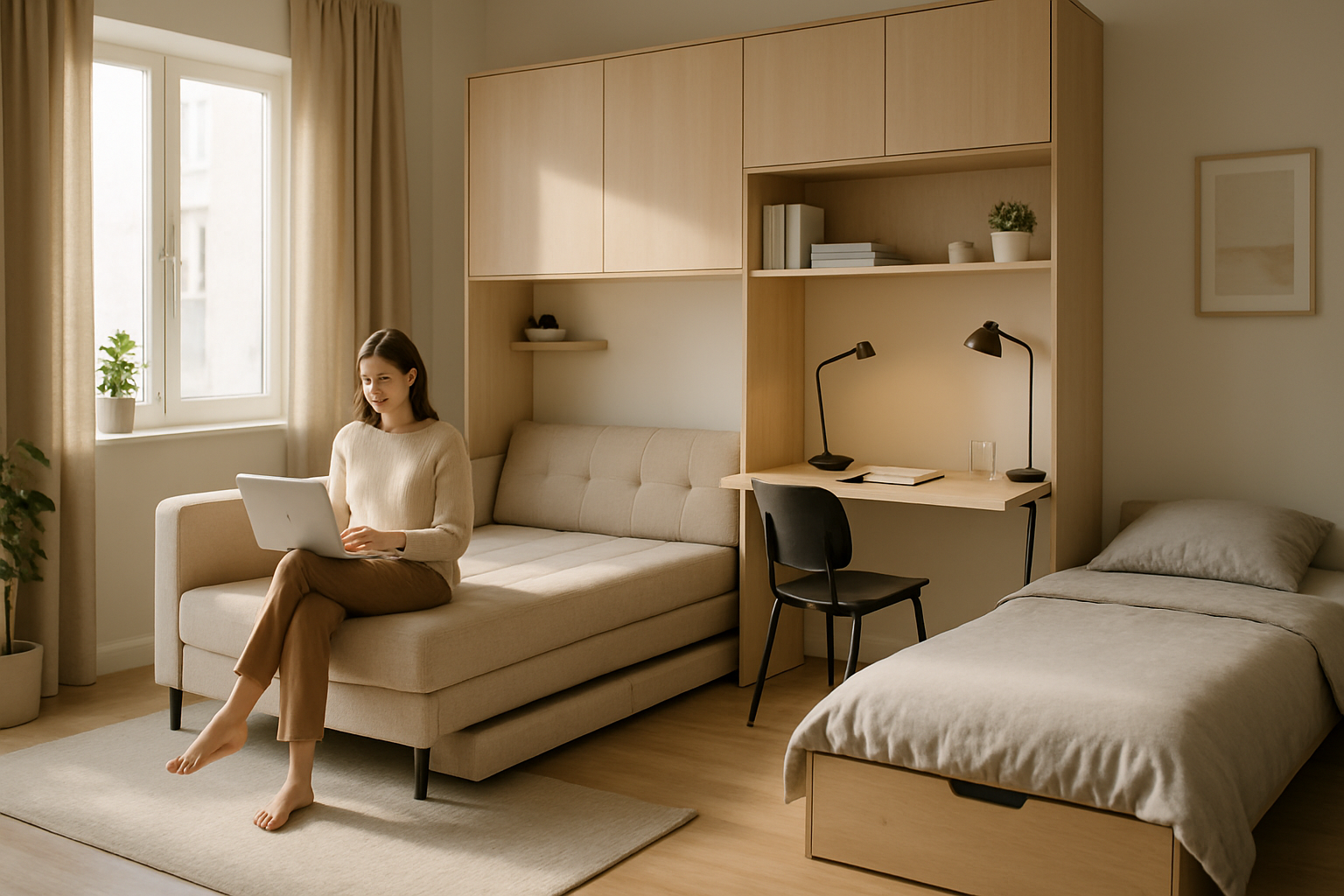Room Divider Ideas for Flexible Living Spaces
A room divider can change how you use a living area without major construction, offering visual separation, added storage, or a focal point. Whether you live in a compact apartment, need to carve out a home office, or want to refresh your interior design, a thoughtfully chosen divider helps define zones and improve functionality while keeping the space adaptable.

Room divider: common types and materials
Room dividers come in many forms—folding screens, shelving units, curtains, sliding panels, and freestanding partitions. Materials range from wood and metal to fabric, glass, and woven rattan. Each material affects light, sound, and visibility differently: translucent glass or acrylic preserves brightness, while solid wood offers more privacy and sound dampening. Consider weight, portability, and whether the divider will be anchored. Lightweight screens suit temporary needs; built-in panels or ceiling-mounted tracks work better for permanent, stable partitions.
How a room divider fits interior design schemes
A room divider can act as both a practical element and an aesthetic statement within interior design. Choose colors, textures, and proportions that echo existing furniture and finishes to create cohesion. Minimalist interiors often benefit from slim-profile or transparent dividers, while eclectic or bohemian styles can embrace patterned screens or open shelving with plants and curated objects. Pay attention to scale: a low-profile divider maintains sightlines and flow, while a taller piece creates stronger separation and a more formal sense of distinct rooms.
Using a room divider in a small space
In a small space, a room divider should maximize function without overwhelming the layout. Open shelving dividers provide storage and display surfaces while allowing light to pass through, making the area feel larger. Curtains or sliding panels are good for flexible use because they can be opened or closed to suit different activities. Avoid bulky, heavy partitions that block natural light. Use multipurpose dividers—those with hooks, baskets, or built-in desks—to combine separation with organization in compact footprints.
Room divider solutions for an apartment
Apartment living often requires creative zoning without altering walls. Temporary and renter-friendly solutions include tension-mounted screens, curtain tracks, and portable folding panels. Look for designs that can be installed without drilling when building rules limit modifications. For long-term renters, freestanding shelving or decorative panels can define entryways, sleeping areas, or dining corners. Consider lightweight, modular pieces that can be reconfigured when you move or when the room’s needs change, keeping versatility a priority for urban living.
Creating a home office with a room divider
A room divider can establish a dedicated home office zone, separating work from leisure even within a single room. Transparent or semi-opaque dividers maintain a sense of openness while visually marking work boundaries. Use dividers that include storage for office supplies to keep the workspace tidy and reduce visual clutter. Position the divider so it blocks distractions from high-traffic areas but still allows access to natural light and ventilation. Ergonomics and cable management are also important—choose a layout that supports a comfortable desk height and neat power routing.
Practical setup and maintenance tips
Measure the space carefully and test sightlines before committing to a divider. Consider door swings, walkways, and how furniture will interact with the partition. If privacy is necessary, add sound-absorbing panels, rugs, or soft furnishings to reduce echo. For maintenance, choose materials that match your cleaning routine: washable fabrics, wipeable finishes, and dust-resistant shelving simplify upkeep. If mobility is important, opt for lightweight constructions or casters. Finally, think about seasonal adaptability—curtains and lightweight screens can be stashed away when you want an open-plan feel.
A room divider is a flexible tool that supports multiple needs—privacy, organization, light control, and style—without structural work. By selecting the right type, material, and placement, you can create distinct zones in an apartment, optimize a small space, or carve out a dedicated home office while keeping your interior design coherent and functional.






